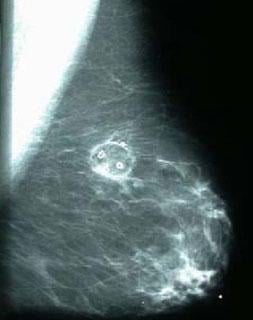
May 5, 2009 - A panel at the recent meeting of the 10th Annual Meeting of the American Society of Breast Surgeons, held April 22-26 in San Diego, included discussion of the advantages of a new laser treatment for fibroadenomas, using the Novilase Breast Therapy to offer a minimally invasive alternative to lumpectomy.
Novilase Breast Therapy uses direct laser therapy to treat fibroadenomas. The system aims to treat these noncancerous tumors while minimizing risks and maintaining the breast’s natural shape and feel.
Among the panelists was Kambiz Dowlat, M.D., a professor of surgery at the Rush University Medical Center in Chicago. Dr. Dowlat pioneered laser treatment of small breast tumors. The procedure he developed is now performed with the Novilase Interstitial Laser Therapy device.
“With the X-ray guided laser technology we have today, lumpectomy is overkill,” said Dr. Dowlat. “Lumpectomy creates a significant scar and can deform the breast when you take the tumor out. Fibroadenomas can be precisely ablated with a laser, giving a superior result and less medical risk than lumpectomy. This is a great boon for patients because they can have their benign tumors treated without significant consequences for their health or appearance.”
Dr. Dowlat noted that breast health is moving toward treatments, such as Novilase, that are less invasive and have fewer side effects.
Tumors are now being detected at earlier stages when they are smaller. Because laser therapy is less intimidating for most women, the procedure provides them with a third treatment option besides surgery and a “watch and wait” approach, which may encourage them to take advantage of early detection.
Dr. Dowlat’s remarks emphasized several benefits of laser treatment over lumpectomy surgery, the traditional approach to treating fibroadenomas:
- Minimal scarring. Because no incision is made, laser treatment generally leaves only minimal scars.
- Natural shape and feel maintained. There is typically no “dimpling” with laser treatment because unlike a lumpectomy, the procedure does not remove tissue. In addition, the body’s natural healing process repairs the tumor site and restores the breast’s natural feel.
• Less risk of adverse reaction. Laser treatment can be performed using local anesthetic. A lumpectomy often requires IV sedation or a general anesthetic, which can be riskier.
• Less infection risk. The procedure involves the insertion of a laser probe and a thermal probe through two 1/8- inch skin nicks. The small size of the nicks keeps the infection risk extremely low. In contrast, a lumpectomy uses a 2 inch-to-3 inch incision, which creates a greater risk of infection.
• Faster recovery. A patient can resume normal activity within a few hours of the procedure. Recovery from a lumpectomy can take several days.
About 10 percent of all women will experience fibroadenomas during their lifetime. Although not cancerous, fibroadenomas can cause physical discomfort and also anxiety because of the association of lumps with breast cancer. Thus, after consultation with their physicians, many women with this condition request that their fibroadenomas be removed.
While Novilase uses direct laser therapy to treat fibroadenomas, laser ablation has been successfully used to treat benign prostate tumors. Novilase also uses the same image guidance for breast biopsy.
For more information: www.novianhealth.com


 December 16, 2025
December 16, 2025 








